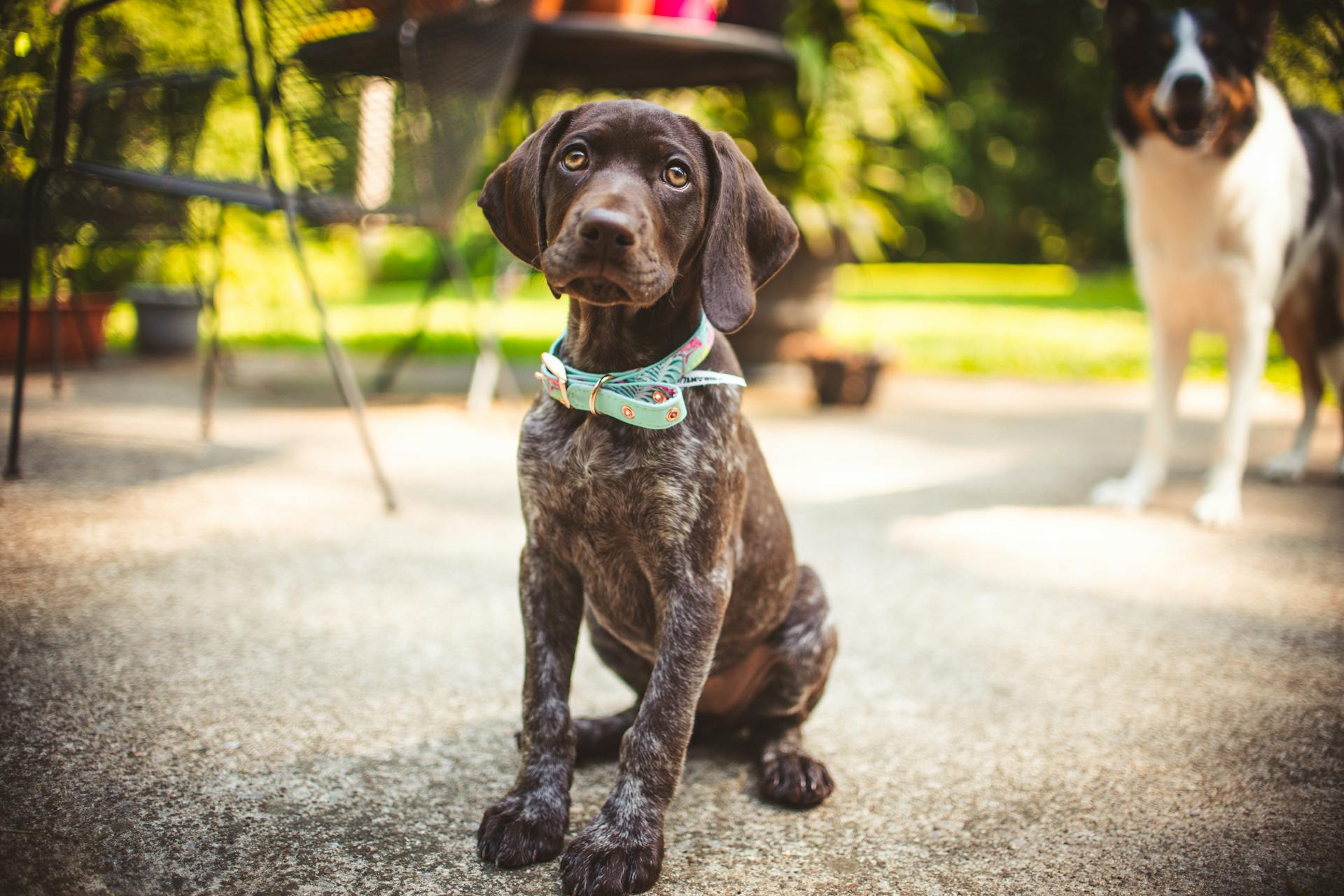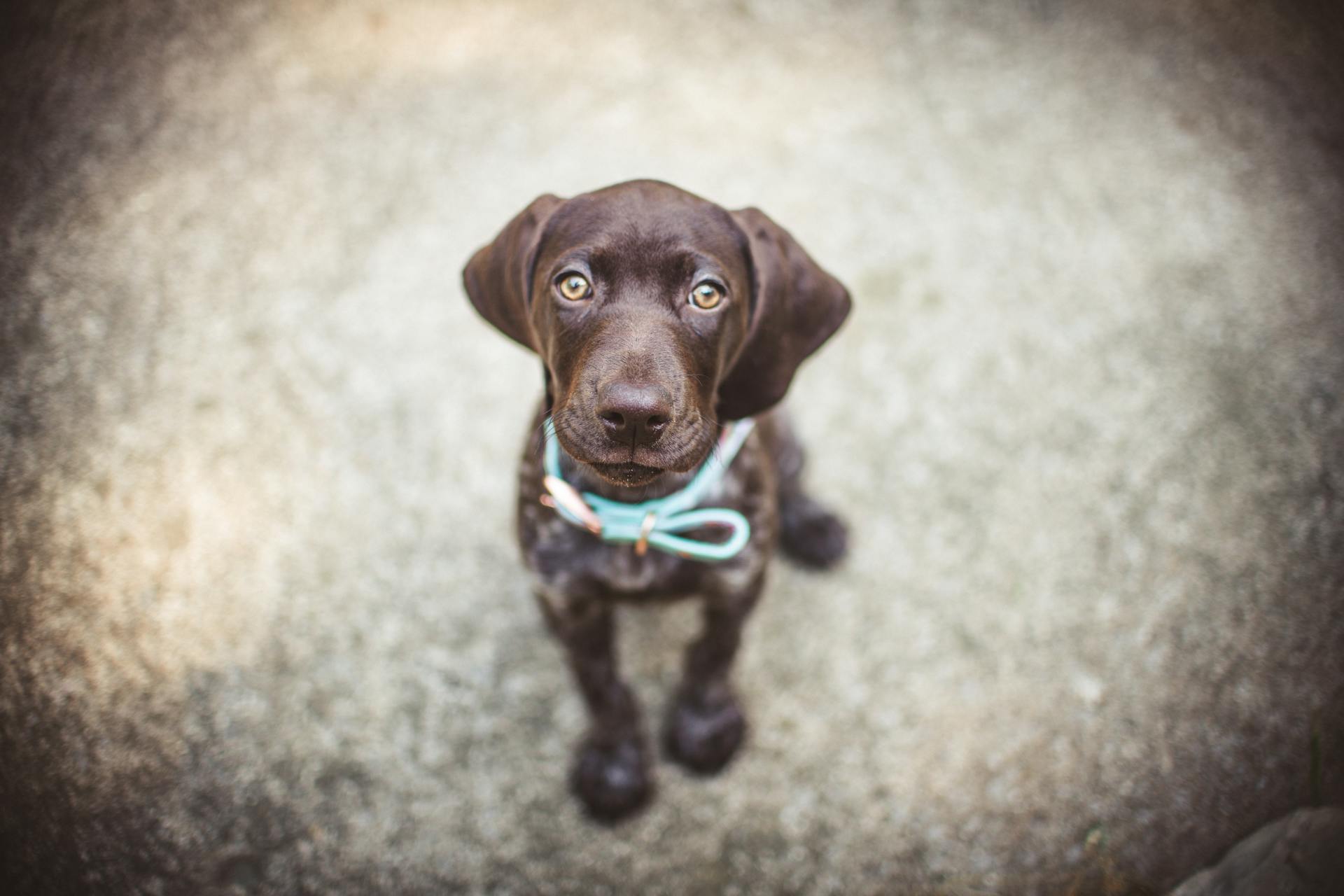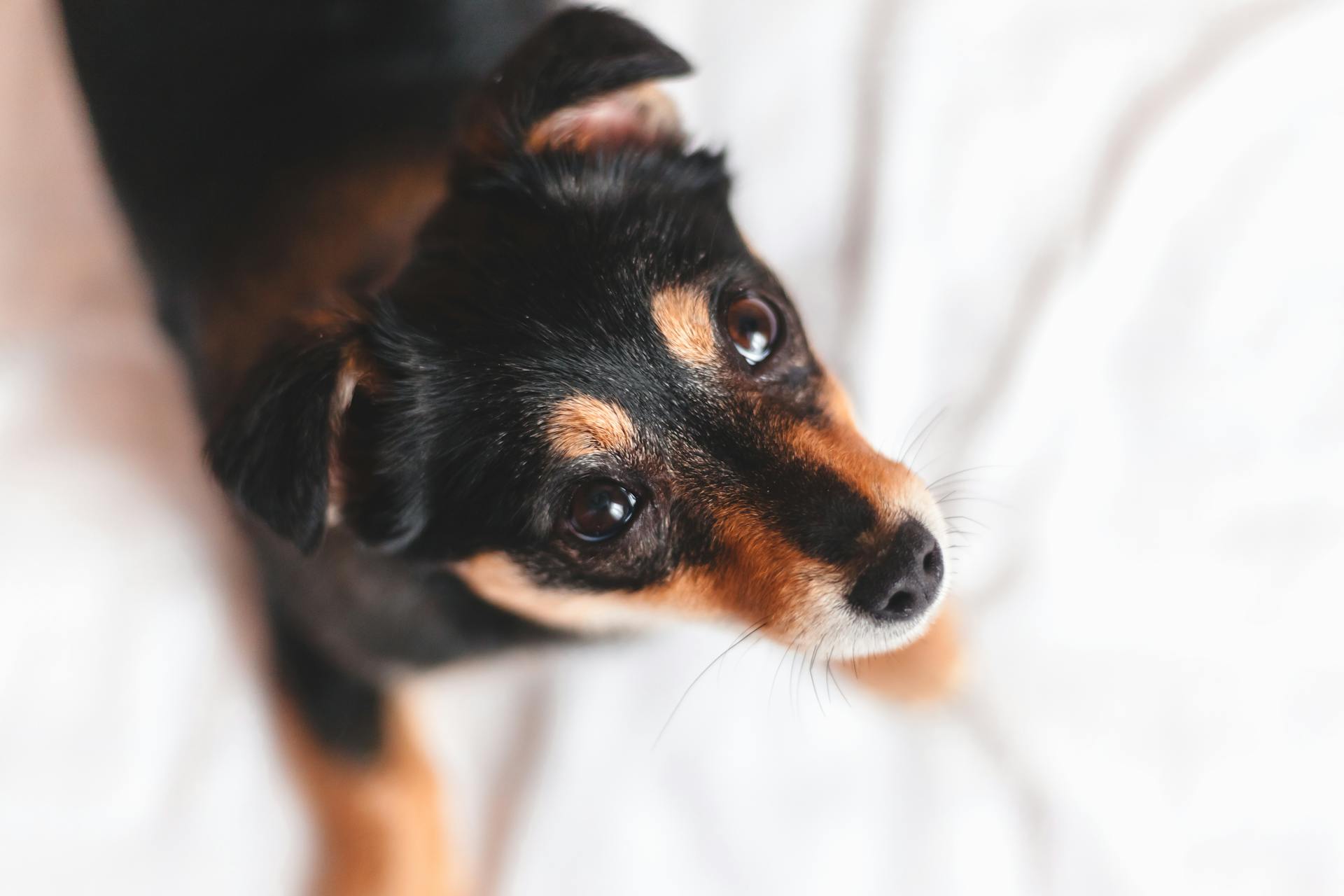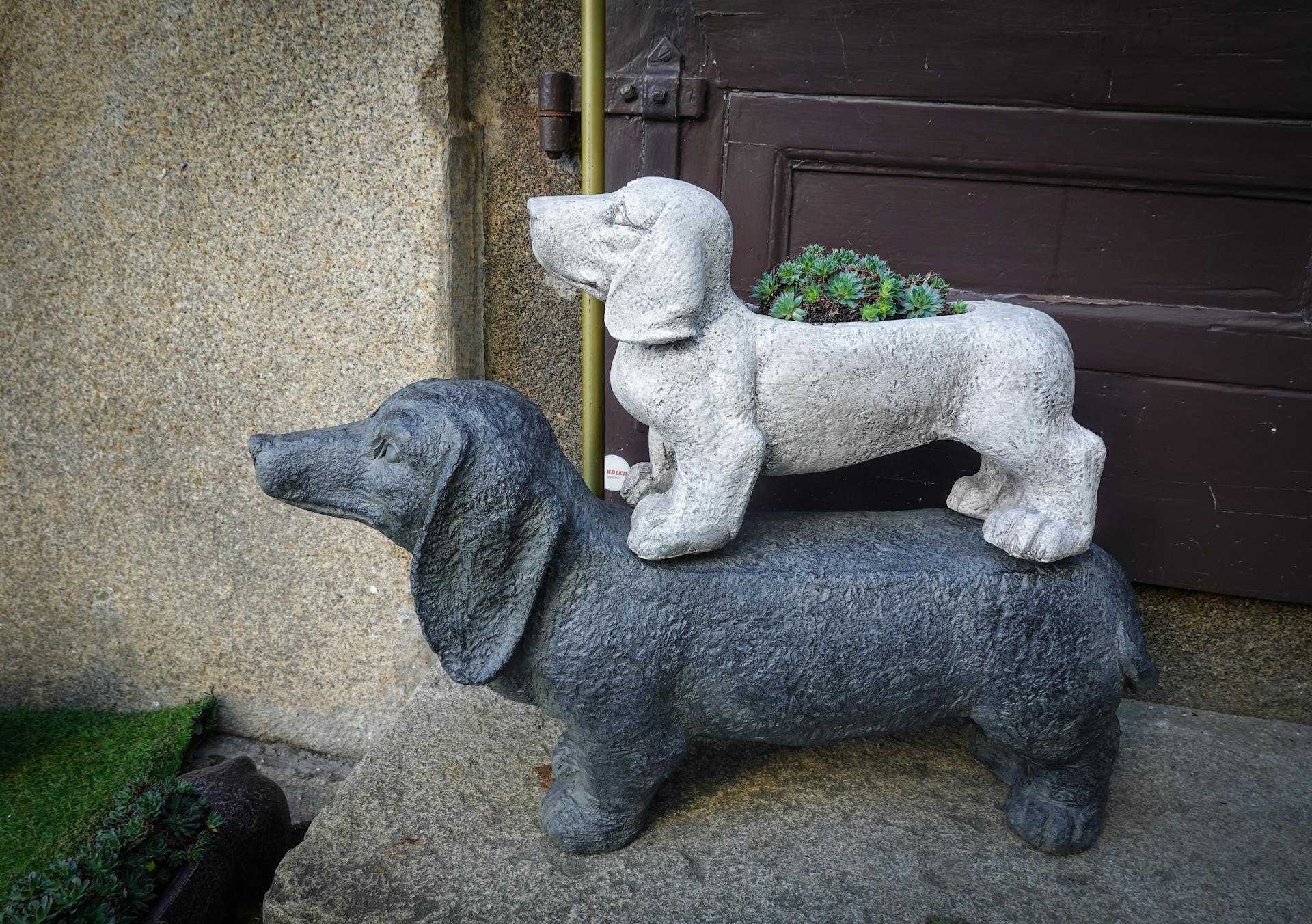
Dachshunds have been a beloved breed in Germany for centuries, with a history dating back to the 16th century. They were originally bred to hunt badgers and other burrowing animals.
Their unique physique, with long bodies and short legs, made them well-suited for this task. In fact, the name "Dachshund" literally translates to "badger dog" in German.
The breed's popularity in Germany has endured, with the Dachshund being recognized as one of the country's most iconic breeds.
Curious to learn more? Check out: Giant Schnauzer Germany
Dachshund Threats and Bans
The draft bill, published in February, aims to strengthen existing laws on "torture breeding" as part of the Animal Protection Act.
Germany's national kennel club, the VDH, believes the reform would leave too much room for interpretation in determining what constitutes a genetic defect.
More than 15,000 signatures have been collected in a petition launched by the VDH to save "our favorite dogs."
The German agriculture ministry denies that the new draft bill would amount to a ban on particular breeds, including the sausage dog.
The ministry is aiming at a ban on "torture breeding" that inflicts long-term suffering on the animals.
Kerstin Schwartz, a dachshund breeder, believes the proposed reform is "outrageous" and would have a significant impact on dog breeders like her.
Suggestion: Breeding Double Dapple Dachshund
Germany's Response
The German government is denying reports of a sausage dog ban, but a draft law aims to clamp down on breeding that leads animals to suffer.
The proposed Animal Protection Act would define certain traits in dogs that can cause pain, suffering, or damage, which could potentially affect breeds like dachshunds.
The government argues that dog breeds are continually developing and at risk of having increasingly extreme characteristics, so breeding dogs with specific traits like skeletal abnormalities would no longer be allowed.
A spokesman for the Green-led agriculture ministry bluntly stated that no dog breeds will be banned, but rather, breeders will be prevented from deforming dogs so much that they suffer.
The ministry's goal is to prevent "torture breeding", which has been illegal in Germany for three decades but has been vague and open to interpretation until now.
The draft law would give precise scientific criteria about what sort of breeding can lead to an animal suffering, and existing animals would be able to be kept but would not be allowed to breed or exhibit in shows.
A German branch of animal rights organisation Peta is calling for a ban on 17 breeds, including sausage dogs, pugs, and French bull dogs, but the government's stance is that they want to prevent suffering, not ban specific breeds.
The draft version of the Animal Protection Law will be put to the German cabinet and then to the Bundestag, Germany's parliament, later this year.
A unique perspective: Animal Planet Dogs 101 German Shepherd
Care and Upkeep
Dachshunds in Germany are known for their love of running and sniffing around, so they need a chance to do that daily, preferably in a fenced yard supplemented with leash walks.
They're active dogs that require regular exercise, and a miniature longhair variety might be a good choice for apartment living as long as daily walks are included.
Dachshunds are independent and love to follow scent trails, so they shouldn't be let off leash in unfenced areas.
Their daily routine should include a variety of games, such as chasing balls, and they especially love sports that test a dog's hunting abilities, like the barn hunt.
Some Dachshunds even enjoy racing events like "wiener dog" competitions.
Their coat care is relatively easy, with the smooth variety requiring only occasional brushing to remove dead hair.
The longhair variety needs to be combed once or twice weekly, while the wirehaired coat requires weekly combing and occasional stripping of dead hair.
Dachshunds are prone to intervertebral disk disease (IVDD), a condition that can cause pain and even paralysis, so it's essential to take precautions to prevent it.
Avoiding movements that place stress on the back, such as jumping on or off furniture or running up or down stairs, can help prevent IVDD.
Preventing obesity is also crucial, and Dachshunds should have active lives to stay healthy.
Readers also liked: German Shorthaired Pointer Coat
Frequently Asked Questions
Are dachshunds popular in Germany?
Yes, dachshunds are a beloved and iconic breed in Germany, often referred to as "dackel" by locals. They hold a special place in German culture and are considered a national symbol.
What do Germans call dachshunds?
In modern Germany, Dachshunds are commonly known as "Dackel", while working dogs are referred to as "Teckel
What did Germans use dachshunds for?
Germans originally bred Dachshunds to hunt small game, such as badgers and rabbits, by tracking them close to the hunter. Their short legs and keen senses made them ideal for this task.
Sources
- https://ca.news.yahoo.com/dachshunds-under-threat-germany-proposes-181858101.html
- https://www.bbc.co.uk/news/world-europe-68689823
- https://www.britannica.com/animal/dachshund
- https://www.petguide.com/pets/blog/news/auf-wiedersehen-wiener-dog-will-germany-ban-dachshunds-44630188
- https://www.cnn.com/2024/03/27/europe/germany-may-ban-mascots-dachshund-intl-scli-scn/index.html
Featured Images: pexels.com


